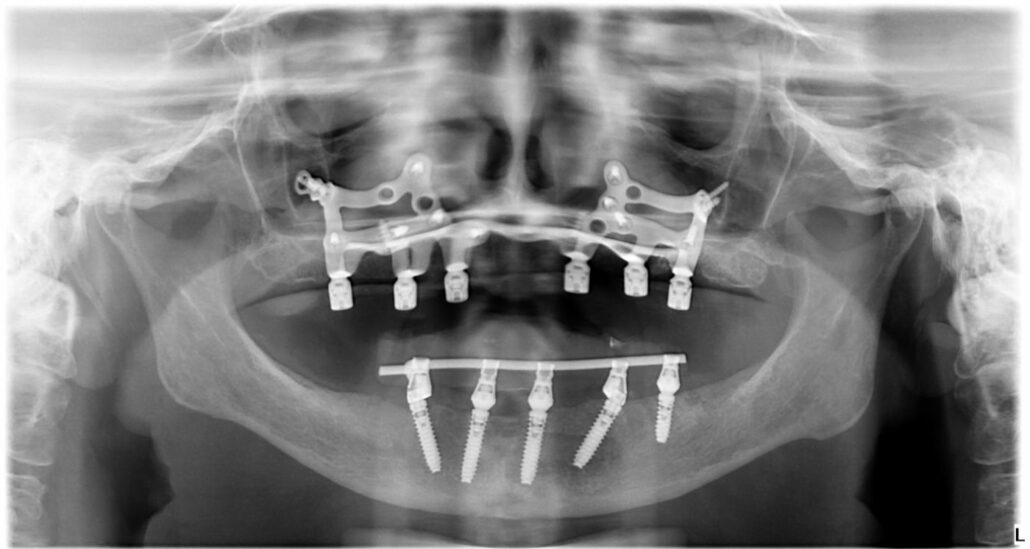What is bone deficiency?

The loss of teeth determines the disappearance of the alveolar bone and the consequent bone atrophy.
The bones of the oral cavity, for reasons such as disease or wear, can resorb over time, decreasing in volume and becoming more fragile.
As this condition progresses, there is a risk of edentulism, i.e. the loss of all the teeth.
For those who need to rehabilitate their mouth with fixed solutions, bone atrophy is no longer an obstacle.
The Subperiosteal Grids
Why rely on Subperiosteal Implantology

WHAT DOES AN SURGERY TO MAKE UP FOR LACK OF BONE CONSISTS OF?
First of all, panoramic x-rays and 3D CT scans of the dental arches are performed and impressions of the mouth are taken.
The customized subperiosteal grid is then created based on the radiographic examinations.
At this point we can proceed with the surgical operation by which the subperiosteal grid is inserted. The dental prosthesis is fixed to the grid after implantation and the fixed temporary dental arch is immediately loaded (immediate loading).
3 or 4 months after the first operation, the temporary prosthesis is replaced by the definitive prosthesis.
WHAT ARE THE RISKS OF THIS TYPE OF INTERVENTION
This technique is more invasive than a traditional implant but its success rate is very high. Furthermore, it is possible to apply it in the almost total majority of cases requiring a dental implant in the presence of serious bone deficits.
In cases where bone regeneration techniques have not worked or are not applicable this is the best solution.

Free visit
Book your free check-up visit!
Our articles
Learn more about the topic by reading our articles.
Lack of bone
What you need to know about subperiosteal implants
Subperiosteal grids are ideal in patients with a total lack of teeth but can be used without problems even when there are few teeth to be replaced.
There are no particular situations or pathologies that prevent the application of subperiosteal grids, this is mainly due to the material they are made of, titanium. It is a highly biocompatible metal with no risk of allergy for the patient. Furthermore, the subperiosteal grids are completely customized because they are made starting from the mold of the residual bone.
Even for subperiosteal grids we can speak of “immediate loading” because it is immediately possible to load a temporary dental prosthesis, in fact the grid does not require osteoingration since it is not inserted inside the bone but simply rested on the bone under the periosteum , that is, the membrane that covers the bone tissue.
It is a more invasive technique than a traditional implant but its success rate is very high and it is truly applicable in the almost total majority of cases.
Warranty and Security
Sanident offers a lifetime international guarantee on Implantology. From 2 to 5 years warranty on fillings, reconstructions, endodontics, crowns, bridges and full arches services.









